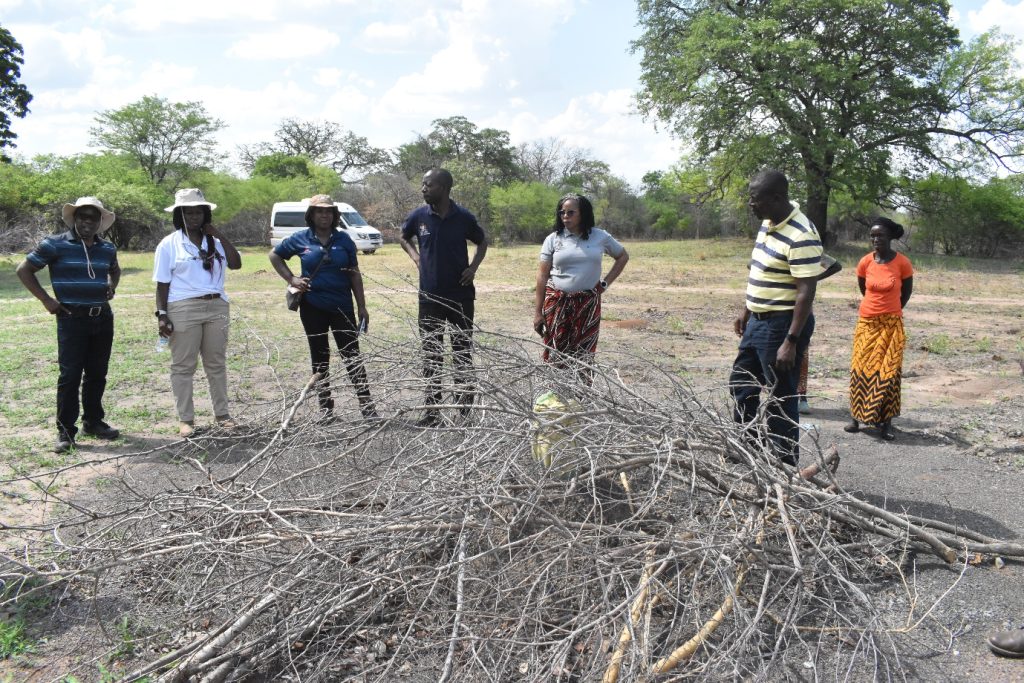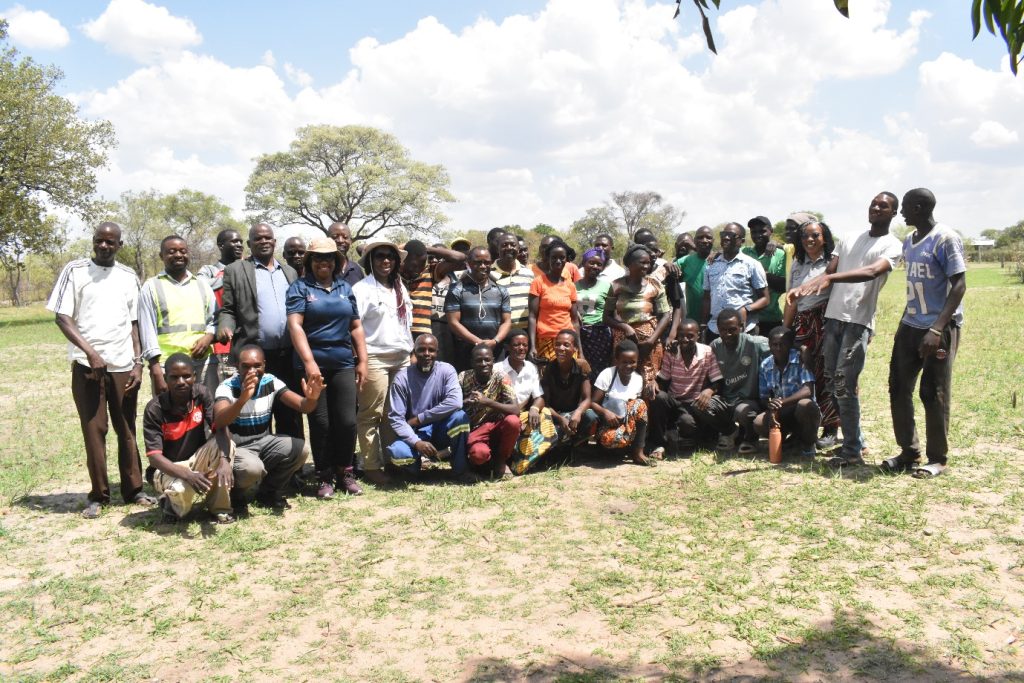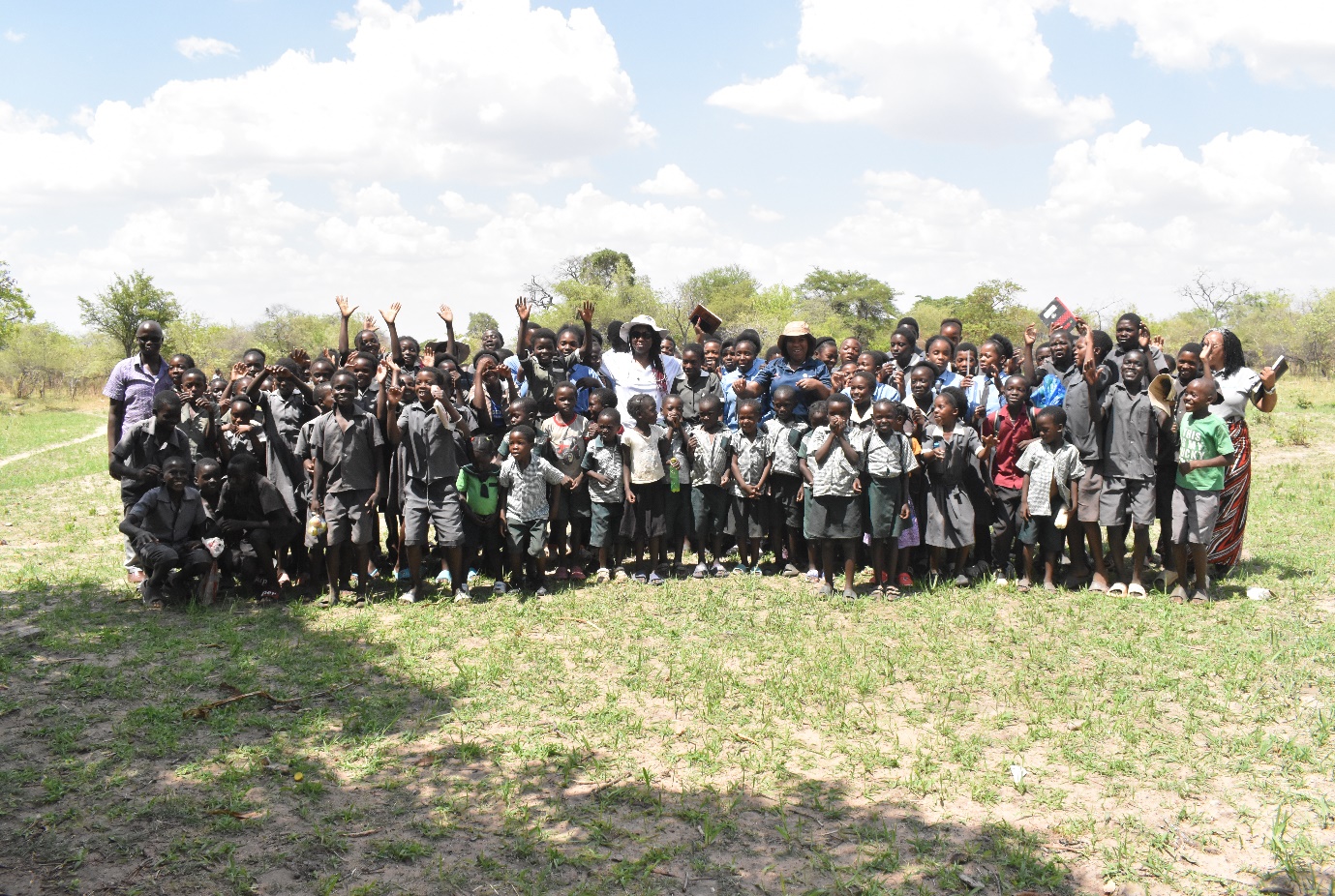Featured image: On the picture are Sihumbwa Basic School learners, teachers, the SADC-GMI Team, a World Bank representative, and the Officials from the Ministry of Water Development and Sanitation Photo by: SADC-GMI
Kazungula Water Supply Project to Transform the Lives of the Community
Kazungula community and Sihumbwa Primary School are about to experience significant water supply improvements due to a project spearheaded by a collaborative effort from SADC Groundwater Management Institute (SADC-GMI) in collaboration with the Global Environment Facility (GEF), Cooperation in International Waters in Africa (CIWA), and the World Bank Group, For a long time, the school and the surrounding community have struggled with severe water shortages, which impact daily life and educational opportunities. This comprehensive project aims to alleviate those long-standing challenges.
On November 21, 2024, a dedicated team from SADC-GMI, officials from the Ministry of Water Development and Sanitation in Zambia, and a representative from the World Bank conducted a detailed site visit to assess the project’s ongoing progress. The mission began at Sihumbwa Primary School, where the team met with the schoolteachers and community members. Sihumbwa is one of the beneficiaries of the project. The meeting was very encouraging, indicating that the initiative is progressing remarkably well and is on track for completion in 2025. Additionally, the team spoke with the community to understand their water challenges and explore their hopes for the project.

The team at the newly drilled borehole site, water reticulation system will be installed to ensure that water gets to the beneficiaries Photo: SADC-GMI
Project’s Benefits
Transforming Education
Mr. Lanest Hamatika, the Headmaster of Sihumbwa Primary School, believes this project is a beacon of hope for the community and will lead to significant transformation. He emphasizes that the lack of water at the school has negatively impacted the educational environment. Specifically, many female learners often stay home during their menstrual cycles due to inadequate water facilities. The school uses a bucket system for drinking, which poses hygiene concerns, as they sometimes must share a single cup. Mr. Hamatika asserts that implementing this project presents a significant opportunity for improvement in the community and is expected to bring about meaningful change. He continued to say access to water would facilitate the resumption of orchard and gardening projects at the school, which had previously been suspended due to water shortages. The implementation of such projects could not only generate additional income for the school but also enhance the nutritional standards of the learners.
Relieving the Burden on the Community
Currently, women and girls travel up to 9 kilometers to fetch water, dedicating hours that could be used for education or other productive activities. By eliminating this burden, the project will allow the community to focus on fostering sustainable development, enhancing food security, and improving overall quality of life.
Ensuring Sustainability
The school and the surrounding community currently source water approximately 9 kilometers away, which strains women and young girls. They often wake up early in the morning to avoid long queues. This challenging situation necessitates significant time devoted to securing water, which ultimately detracts from their ability to engage in more productive activities.
With this new water supply, learners and community members can engage in other productive activities, fostering education and sustainability while promoting food security.
Project’s Sustainability
The school principal expressed enthusiasm about the impending completion of the project, which aims to enhance local educational facilities and improve livelihoods. He said that in preparation for this development, the community has proactively formed a dedicated committee responsible for managing the repair and maintenance of the new infrastructure. This committee’s primary objective is to protect the facilities against vandalism, uphold their quality, and ensure the infrastructure is sustained.

On the picture are some of the community members who were part of the mission alongside the SADC-GMI, the Ministry of Water Development and Sanitation, and the World Bank Photo: SADC-GMI
Additionally, the principal highlighted that the community is committed to providing financial support to sustain the project’s ongoing maintenance efforts, reflecting its investment in the long-term success and well-being of the educational environment.
A Catalyst for Social Development
Eng. James Sauramba’s inquiry about the community’s intentions upon gaining access to clean water sparked a focused yet diverse range of responses. The community expressed a clear interest in using the newfound access to clean water as a catalyst for various developmental projects, particularly aquaculture and gardening. These initiatives were seen as vital for generating income and improving livelihoods. Additionally, the community believed that clean water would have a transformative impact on their domestic animals, whose health had been compromised by the previous lack of water. The project hoped to alleviate these adverse conditions, leading to healthier livestock and more sustainable agricultural practices.
Ms. Palesa Mokorosi, Water Resources Management Specialist from the World Bank and the project’s Task Team Leader (TTL), expressed her appreciation for the progress made and her satisfaction that the project is poised to have an immediate and positive impact on the community, mainly benefiting the children, promoting improving livelihoods and promoting sustainable groundwater development which aligns with the World Bank’s vision to reduce poverty and promote sustainable development with knowledge, financing, and expertise.
Once finished, the project will ensure a consistent and reliable supply of clean drinking water for the school and its neighboring community, significantly improving the quality of life in the area.





